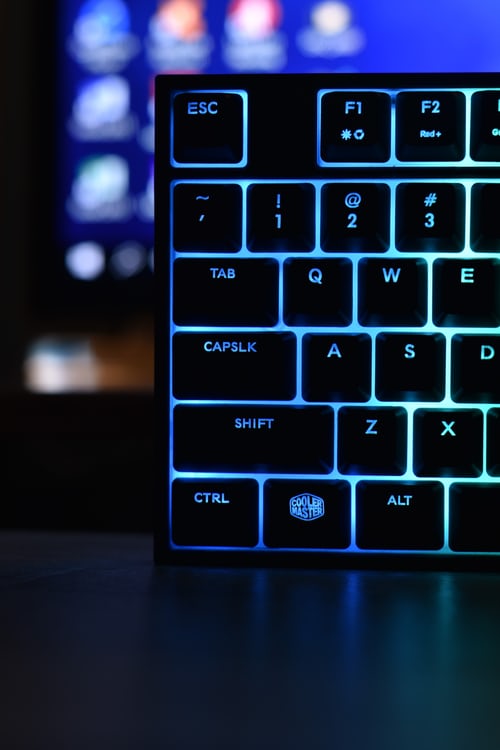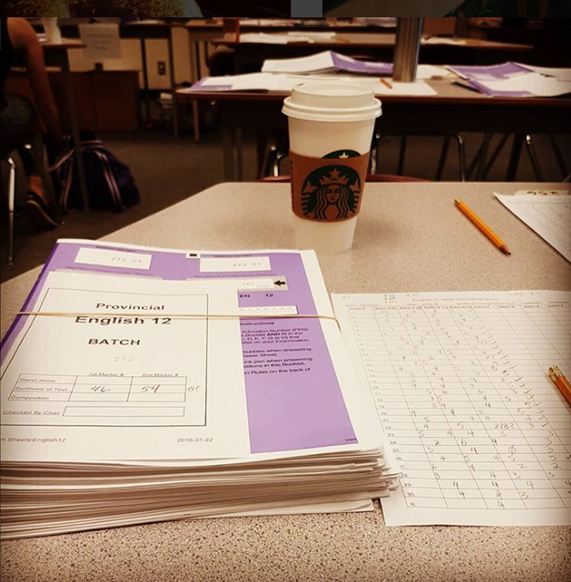 I play computer games. Every Friday night at around 10:30, I connect through my gamer headset with the same group of guys. Twice a year we gather for what is known as a LAN party. We’ve been doing this for so long, I think it might be possible that our group invented LAN parties. I’ve known some of these guys for 40 years, one (my brother) even longer.
I play computer games. Every Friday night at around 10:30, I connect through my gamer headset with the same group of guys. Twice a year we gather for what is known as a LAN party. We’ve been doing this for so long, I think it might be possible that our group invented LAN parties. I’ve known some of these guys for 40 years, one (my brother) even longer.
My non-gamer readers can stop here, this will be irrelevant for anyone who doesn’t play computer games.
Over the years we’ve played many different games. Some stuck around for years. These included Doom, Age of Empires, Counter-Strike, most of the Call of Duty series, and League of Legends (League or LoL).
About 5 years ago, DotA 2 (Dota) showed up on our radar. It is very similar to League. My brother was working at Valve, the company that makes the game, and he was very eager to have us play some Dota on Friday nights. Because he was my brother, I played without complaint, but I didn’t like Dota very much. It was frustrating. I liked League way better. It was simpler and more familiar. Why mess with a good thing?
My attitude about League and Dota has changed in the last year. Not everyone in our Friday night group feels the same way. Lately, on most Fridays, we play a game of each, but we’ve rarely played a game of Dota without verbal complaints identical to my silent ones of a year ago. The purpose of this post it to articulate why I now like Dota 2 better than League of Legends.
It’s not that one game is inherently better than the other. It is simply that each is designed to offer a different gaming experience. In a nutshell, League of Legends is more about the timing and execution of the skill shot. The skill shot—the mechanics are designed to serve it, items are designed to enhance it, combos are built around it, and mana pools are deep to feed it. Aggression and mechanical skills are rewarded in League.
I’m not sure if it’s my fingers or my brain, probably both, but have never been very good with timing and precision. All games require them, but in some, but don’t have the same emphasis on speed and accuracy. A long time ago I came to realize that I like games that create unique narratives. I like baseball better than basketball for this reason. Age of Mythology better than Rocket League. I enjoy the Search and Destroy mode in COD 2 much better than Team Death Match because, win or lose, I enjoy the story is created.
I like Dota 2 better than League of Legends because the former creates a better story.
Dota 2 creates a richer narrative than League of Legends
Heroes/Champions:
In League of Legends, there are five main roles. ADC, support, mid, top, and jungler. Although some Champions blur the boundaries between them, these roles are fairly rigid. The descriptors of the main roles in Dota 2 are carry, disabler, initiator, jungler, support, durable, nuker, pusher, and escape. Each of the five Dota heroes in a particular game has a different combination of several of these qualities in different proportions. The effect is that there is a lot of flexibility in how and where a hero is played. Carries, for instance, can be found in any, and even all lanes. Roles aren’t set in stone—there is no ADC (that always goes bot and is always accompanied by a support) for instance. In Dota you can have a tri-lane; I’ve played two such games this week. There’s no need to have a hero dedicated to jungling. Supports in Dota, depending on the specific hero, have much they can do. They lane block and deny. They can push or stack camps for gold-hungry carries and pull creeps to neutral camps in order to maintain an advantageous lane equilibrium. They can be the first to rotate to other lanes that need support. They can be aggressors and are often initiators in fights and bring game-changing abilities in team fights.
Another element adding flexibility to Dota 2 heroes are talents. At every fifth level, a player can choose between two traits, unique to each hero on the talent tree. This means that the character of Abaddon in this game can be different than that of Abaddon in the last game.
In Dota, hero identity, lane assignments and roles are fluid. All this to say that the individual hero identities and roles are fluid and adaptive, making each game unique from the starting horn.
Items:
Item selection further increases the uniqueness of a Dota hero and therefore builds more unique narratives. Each hero has a different set of core items making each significantly different than any other hero. But that’s not all; the situational items can take a hero is very different directions. A support hero can become more of a carry if circumstances warrant.
In League, builds don’t create as much of this differentiation—there is also a lot of similarity in builds within particular roles. Most ADCs, for instance, buy the same items as the other ADCs. The items in League tend to focus a character even deeper into their role. This is not a bad thing. It’s a deliberate part of League’s design. Items are meant to increase the power of abilities.
In Dota we find different priorities. Items take a hero in different directions. Items can enhance strengths or reduce weaknesses, and they do so in the context of the game/story. They are used to counter abilities or items on the other team, or to a shift to a new team strategy. Consequently, it is not possible to “complete your build” in Dota 2. The story keeps shifting even late in long games. There is always another item to purchase to help you given the particular story/game in which you find yourself.
Game Play:
In League, with its emphasis on skill shots, commands to move, attack, or spell-cast happen very quickly—you can move, shoot, slash or cast in any direction instantaneously. Dota has longer animations; the heroes need to turn before they can move or shoot in a new direction.
Again, League is about the skills, so the instantaneous use of these skills is the priority. To this end, League has large mana pools. Dota has more innately powerful abilities, but they cost you a lot more in mana to use them. Consequently, they have to be used more sparingly. Both the more powerful abilities and the inability to spam them, contribute to the narrative.
Team Fights in League are short and fast-paced. In Dota there are more of fights, they are longer and they can have various phases. In Dota there are more buttons to push, but many of the abilities and items are more forgiving with timing and mechanical skill. There is more time to see the effect of each successful cast or item used. All this combines to enhance the narrative quality of team fights.
In Dota, more expensive items are less effective in relation to how much gold it cost you to get them. In League, the opposite is true; the more expensive the item, the more efficient it is in relation to the gold spent. This leads often leads to one team “rolling” the other team because of significantly higher net worth. Teams can’t come back as easily. Hence the surrender option—why continue if the ending is obvious. In Dota, there are ways to of dealing with a gold deficiency or an over-fed carry on the other team. Comebacks are much more likely and comebacks make for great narratives. This is why there is no surrender option.
In Dota there are more fights because of teleport scrolls. Teleport scrolls are also one of the reasons why Dota 2 is more of a team game. Smoke which makes invisible all heroes in a certain proximity is one of many items that involve the entire team and is used in a coordinated team action.
Dota games tend to be, longer consequently, the victory is sweeter and the defeat more bitter—comedy or tragedy. Either way, the story is better.
Complexity:
Much of the frustration that new players experience in Dota 2 is a direct result of its complexity. This is particularly true of those who have played a significant amount of League of Legends which is more streamlined around skill shots and mechanical skills. The complexity of Dota arises from heroes and items, but the complexity does not end there.
The League recall takes you back to base. The Dota teleport scrolls take you to the base and to any tower or fountain. Further, in League you can select teleport as a summoner spell before the match starts; if you didn’t buy it, you can’t get it, but in Dota, any hero can buy boots of travel if conditions merit.
In Dota, trees can be destroyed through various means so as to improve the vision of wards.
Healing can be done at fountains.
In Dota 2 we have the courier to deliver items, and they can be killed.
There is denying creeps or towers. You can buy limited items in lane shops and other items exclusively in secret shops. There are buy-backs, stacking and pulling. There is the day/night cycle and high-ground mechanics—more complexity. I could go on, but you get the idea.
Some people don’t like this complexity. Those who are new to MOBAs might prefer the relative simplicity of League. I know from first-hand experience that those who have played a lot of League will find these elements frustrating.
I eventually overcame my frustration with Dota because I got used some aspects of this complexity, although I still have much to learn. I began to understand that the differences weren’t just pointlessly complicated ways of doing a simple task, but elements that made every Dota game unique—I realized that the flexibility and complexity contribute to the narrative quality of Dota 2.
It is truly pointless to argue that one of these games in inherently superior to the other. If your first MOBA was League of Legends, the only problem with Dota 2 is that it’s not League of Legends and vice versa. If players give each game the necessary time to truly understand the relative merits of each, some will naturally like League’s more streamline skill-oriented play. Others will like the complexity and flexibility of the narrative that Dota provides.
I happen to be one of the latter.







 I play computer games. Every Friday night at around 10:30, I connect through my gamer headset with the same group of guys. Twice a year we gather for what is known as a LAN party. We’ve been doing this for so long, I think it might be possible that our group invented LAN parties. I’ve known some of these guys for 40 years, one (my brother) even longer.
I play computer games. Every Friday night at around 10:30, I connect through my gamer headset with the same group of guys. Twice a year we gather for what is known as a LAN party. We’ve been doing this for so long, I think it might be possible that our group invented LAN parties. I’ve known some of these guys for 40 years, one (my brother) even longer.


